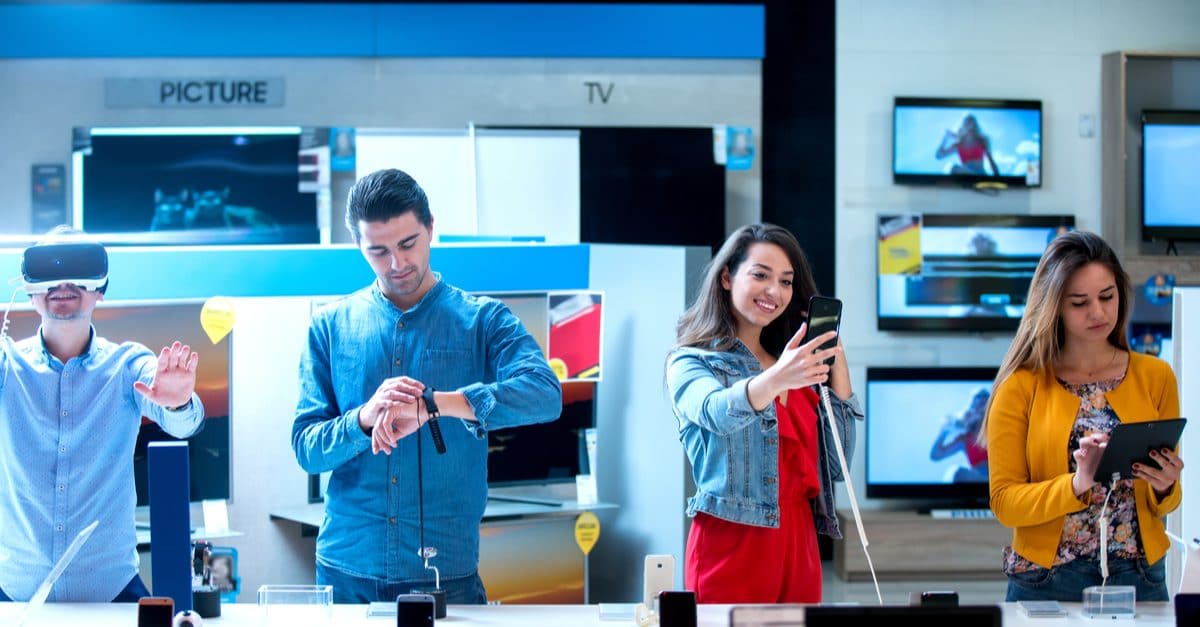
We’re living in a digital age where it’s uncommon for someone not to own electronics or use the Internet. You can even be considered “sketchy” if you don’t have a social media profile. 97% of Americans own a cell phone of some kind and 93% of American adults use the Internet.
Americans have become just as reliant on other kinds of consumer electronics, too. Calculators have changed the way we teach math to our kids. Most would get lost without using a GPS. It’s rare to find someone who hasn’t played Fortnite or binge-watched Breaking Bad.
A recent study by Global Market Insights predicts the global consumer electronics market may exceed $1.5 trillion by 2027. The market is only growing – which means so will the competition for electronics brands.
@ziplinelogistics #Electronics #FavoriteBrands #FYP @apple @Microsoft @Samsung @Sony @Intel Corporation @Philips Home Living Indonesia ♬ 3 Nights – Dominic Fike
What Not Meeting Retail Compliance Costs Electronics Brands
We all know electronics can cost top dollar to buy, but they can also be expensive to sell if consumer electronics brands don’t understand the importance of meeting retail compliance.
Note: Calculations in this blog are based off assumed values and margins.
Heavy Retail Compliance Fees
Retailers recognize the competition for their shelf space and continue to up their expectations in return. Walmart, for example, requires suppliers must meet a 98% on-time in-full (OTIF) rate to stay in compliance. It’s strict but still gives a 2% grace window. That means if you’re shipping 5,000 units of a product, 100 of those units can arrive late or damaged without costing you anything. But that’s the cut off! Every unit falling outside the retailer’s good graces will cost the supplier 3% of the cost of goods sold.
Let’s look at an example.
Sony electronics are in Walmart’s everywhere: PlayStations, Bluetooth speakers, TVs, cameras, you name it. A 2021 model of the Sony 65″ Smart TV is selling for nearly $1,200 right now. Assuming the TV was marked up to turn a profit, let’s pretend Sony sold and shipped 5,000 units to distribution centers all over the country at $1,000 per unit. For any units not meeting OTIF, we’d be looking at a $30 fine per unit. That may seem like a small price to pay – until you do the rest of the math.
Say Sony used an average broker to move their freight. The industry average OTIF rate sits at 77%. Using that number, 1,150 units would not be delivered on-time in-full. Once we exclude the 100 units falling into the 2% grace window, we’re left with 1,050 units eligible to be fined at $30 each.
Sony would be coughing up $31,500 in fines.
Yeah, you read that number right.
How On-Time Delivery Impacts Gross Profit
As if the fines aren’t costly enough, consider the direct hit an electronics company’s gross profit takes for not meeting OTIF.
Where the average consumer-packaged goods companies usually operate between a 25% and 45% gross margin, electronics companies average closer to 60%.
| Annual Revenue | On-Time Delivery Performance | Gross Profit |
|---|---|---|
| $10 Million | 77% | $4,620,000 |
| $10 Million | 95% | $5,700,000 |
This example assumes a 60% gross profit margin.
The difference between sourcing an average broker to handle your freight (77%) and hitting the performance retail buyers expect (95% or better) is $1,080,000 in gross profit opportunity.
What would you do with one million extra dollars?
Here’s one idea. Most CPG companies allocate 7-9% of their gross profit to transportation spend. For a $10MM company, the amount of money mastering on-time delivery saves covers that expense ($700,000-$900,000) completely. This point of view shows us logistics isn’t a cost center, but rather a profit driver when you trust the right partners.
Win Shelf Space, Reduce Fines, and Thrive with a CPG 3PL
Not meeting OTIF or getting your product on the shelf is even more costly when shipping products with such high value. Especially right now, when the supply chain is wonky and delays are inevitable, electronics brands shipping into retail locations must really step their game up.
The best way to do that? Investing in logistics partners.
What if we told you we could get your OTIF rate up to 95%? Depending on what your revenue and shipments look like, that could mean saving thousands in fees and even millions in gross profit.
By the way, that 95% isn’t a random number we threw out. It’s Zipline Logistics’ actual OTIF average.
Our numbers are so good because we know what we’re doing. We’re the only third-party logistics partner in North America exclusively servicing the consumer-packaged goods sector. Eliminating stockouts and retail fines is all we do!
Our network of carriers specialize in CPG shipping and understand the importance of meeting retail compliance. Carriers are hand-selected by our world-class team of retail transportation experts to best fit each CPG shipper’s needs. Totally bragging: our customer service ranks 5 times the industry average.
Want to see for yourself?